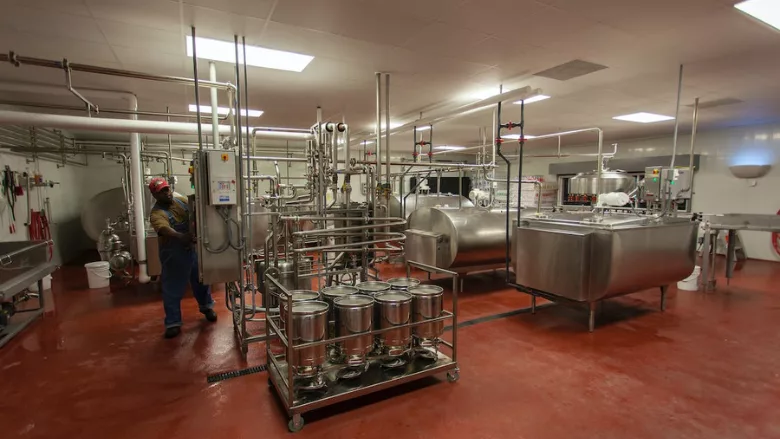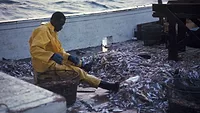FAO, WHO Report on Food Safety of Water Reuse in Dairy Industry

Credit: Mark Stebnicki via Pexels
The Food and Agriculture Organization of the United Nations (FAO) and the World Health Organization (WHO) recently published a report that provides guidance for the dairy industry on food-safe sourcing, use, and reuse of fit-for-purpose water.
The report is based on a Joint FAO/WHO Expert Meeting on Microbiological Risk Assessment (JEMRA) session that was convened online from June 14–July 2, 2021 in support of the Codex Alimentarius Commission’s work to develop guidelines for the safe use and reuse of water in food production.
The report gives an overview of potential sources of reusable water in dairy processing and considerations for its application. Examples of water types that could potentially be sourced for reuse include water that:
- Was part of a dairy product
- Has come into a dairy operation in the form of drinking water and is recirculated until it is no longer suitable as drinking water
- Has been used for cleaning purposes in the food processing operation or other parts of a facility
- Is part of a dairy operation’s effluent.
Whether reuse water is designated as not-for-food-contact or for-food-contact will determine if a reconditioning process is required prior to application. The report underlines that every water reuse scenario—such as the combination of reusable water source and reuse water application, including specifics like recovery, reconditioning, storage, and distribution—must be thoroughly reviewed to ensure food safety of the final product. Dairy operations should refer to the relevant regulatory requirements when designing and operating a water reuse scenario. The ability to control potential hazards should also be taken into consideration, and water reuse and control should consider specific conditions, such as:
- The microbial status of the water source
- The microbiological requirements associated with the reuse water application to ensure food safety of the final product
- The microbiological efficacy of the reuse water generation system, which is related to the combination of the technologies, equipment, and infrastructure employed for water recovery, reconditioning, and storage
- The need to consistently control the reuse water generation system and the application of the reuse water produced in the day-to-day operation
- The role of microbial testing for validation and verification in designing and managing reuse water generation and use, as well as the ability to apply appropriate testing approaches.
Additionally, when assessing potential microbiological hazards and establishing appropriate controls for reuse water generation and use, FAO suggests taking into account:
- The microbial hazards present in the possible reusable water sources, as well as hazards associated with other parts of the operation that could contaminate a reuse water supply after it has been produced
- Nutrients present in a reuse water supply after recovery and reconditioning that may foster the growth of spoilage organisms or microbiological hazards
- Whether reuse water that has been recycled or recirculated multiple times in a specific process operation is leading to or has resulted in biofilm formation
- Whether any particular measure for preservation of the product or for control of microbial growth is required over the set shelf-life of the reuse water supply
- The need to have available a back-up fit-for-purpose water supply, such as a drinking water source, that can be used in case the reuse water generation system is not under control or has failed.
The report highlights similarities between food safety controls and the management water supply generation, such as the importance of following a risk- and evidence-based approach. Hazard control plans for a reuse water generation process should be based on several steps derived from hazard analysis or risk assessment that:
- Identifies the known or potential hazards that a reusable water supply might have acquired through its earlier application
- Identifies hazards possibly contaminating the water in the course of reuse water generation, storage, and use
- Assesses the potential risk that any identified hazards, based on the likelihood of their occurrence and concentration in the reuse water, may pose to consumer safety through the food being produced in the dairy operation.
Also important is the validation of recovery, purification, or antimicrobial treatment conditions for each water reuse scenario. During operation, the reuse water generation process should be monitored daily, including timely verification of its microbiological status. The report suggests the use of third-party contractors if necessary.
Overall, the report recommends that food business operators tailor each water reuse scenario to the specific conditions of its particular food operation, taking into account: the purpose of water reuse, available sources of reusable water, the reuse water generation system and underlying processes, storage and shelf-life of reuse water supplies, the approach to managing reuse water generation and application, and the skills and expertise available to manage day-by-day the implemented water reuse scenario at the operational scale.
Finally, the report identifies knowledge gaps that exist and capacities and capabilities that need to be addressed, especially in low resource settings:
- The understanding of the types and levels of microbial, physical, and chemical hazards potentially present in reusable water sources within dairy operations, as well as the ability to conduct appropriate risk assessment and hazard analysis for a particular water reuse scenario
- The ability to assess the effectiveness of individual or combined technologies for recovery and reconditioning of reusable water supplies and for mitigating relevant hazards
- The validation of recovery, reconditioning, shelf-life/storage, and application technologies, as well as the operational management during full scale operation
- The establishment and the use of microbiological parameters for verification of operational control, and for validation and verification of water reuse operations
- The deployment of suitable or alternative technologies for recovering and reconditioning water in dairy operations that have limited resources, capabilities, and technical infrastructure.
The report encourages the sharing of data, knowledge, evidence, expertise, and other resources between international stakeholders, especially the sharing of experiences in setting up effective reuse water generation systems and fit-for-purpose applications of reuse water supplies in small to large dairy production and processing facilities.
Looking for quick answers on food safety topics?
Try Ask FSM, our new smart AI search tool.
Ask FSM →








